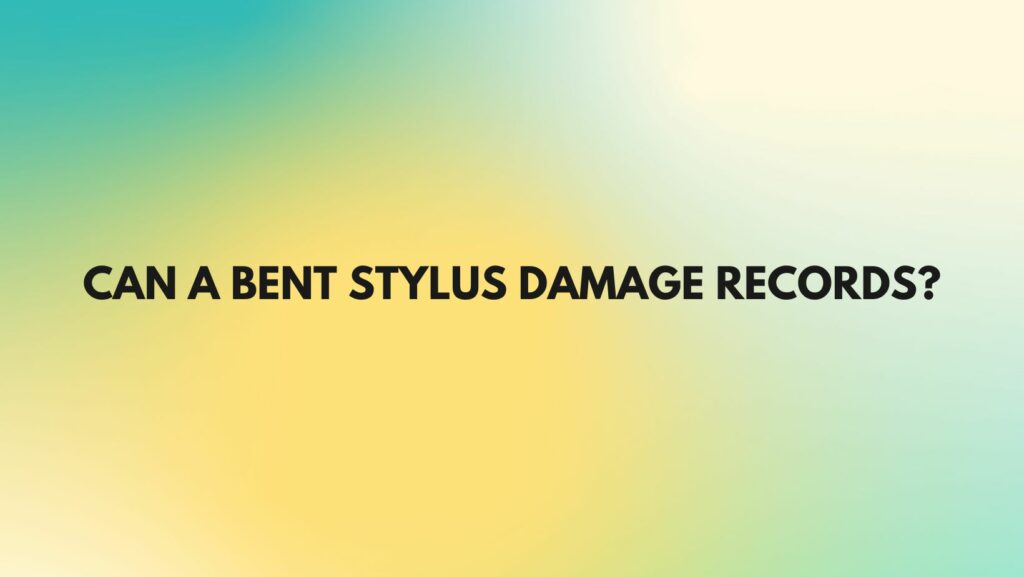In the delicate dance between turntable stylus and vinyl records, precision is paramount. Audiophiles invest time and care in maintaining the integrity of their vinyl collection, but a common concern arises: Can a bent stylus damage records? This article delves into the potential consequences of a misshapen stylus and explores the impact it may have on vinyl records, providing insights into the measures enthusiasts can take to safeguard both their stylus and cherished record collection.
1. The Crucial Role of Stylus Shape:
The stylus, with its slender profile, acts as the ambassador between the vinyl grooves and the auditory senses. The shape and alignment of the stylus are critical factors in ensuring a smooth traversal along the record grooves without compromising the delicate surface.
2. Misalignment and Uneven Wear:
A bent or misshapen stylus can lead to alignment issues within the cartridge. As the stylus attempts to trace the grooves, misalignment can result in uneven wear patterns on both the stylus itself and the vinyl records. This uneven wear has the potential to compromise sound quality and introduce distortions.
3. Increased Tracking Force:
A bent stylus may necessitate an adjustment in the tracking force applied to the record. If not addressed promptly, this adjustment can lead to an increase in tracking force, exerting additional pressure on the delicate vinyl grooves. Excessive tracking force poses a risk of accelerated wear and potential damage to the records.
4. Impact on High-Frequency Detail:
The stylus’s ability to faithfully reproduce high-frequency details is crucial for maintaining audio fidelity. A bent stylus may struggle to maintain consistent contact with the intricate details of the record grooves, resulting in a loss of clarity and brilliance in the high-frequency spectrum.
5. Potential for Record Deformation:
In extreme cases, a severely bent stylus has the potential to cause physical deformations on the vinyl surface. The increased pressure on specific areas of the grooves may lead to groove damage, warping, or even permanent alterations to the record’s sonic characteristics.
6. Auditory Cues:
Audiophiles, attuned to the subtleties of sound, often detect issues through auditory cues. Changes in sound quality, increased surface noise, or tracking problems may signal the presence of a bent stylus and potential damage to the records.
7. Regular Inspection and Maintenance:
Routine inspection of the stylus for any signs of bending or misalignment is a fundamental practice. Regular maintenance, including proper cleaning and calibration, can help prevent issues associated with a misshapen stylus.
8. Timely Replacement:
If a stylus is found to be bent or damaged, prompt replacement is advisable. Continuing to use a compromised stylus not only risks damage to records but also jeopardizes the overall health of the turntable and cartridge.
Conclusion:
While the stylus is a minute component in the intricate world of vinyl playback, its impact on record preservation is profound. A bent stylus, if left unaddressed, can potentially harm the cherished vinyl collection and compromise the auditory experience. Enthusiasts, armed with awareness, routine inspection practices, and a commitment to timely maintenance, can ensure that the delicate dance between stylus and vinyl remains a harmonious affair, preserving the magic of analog audio for generations to come.


